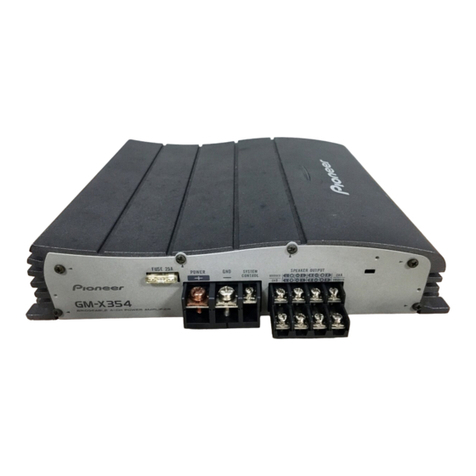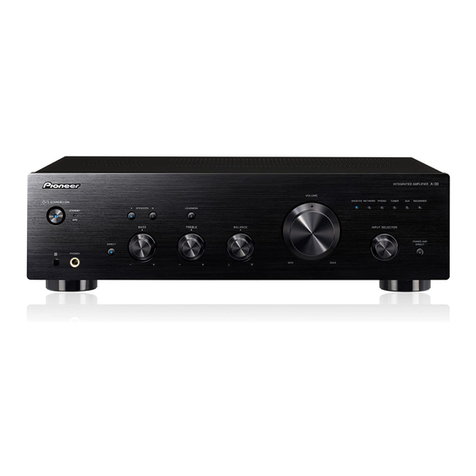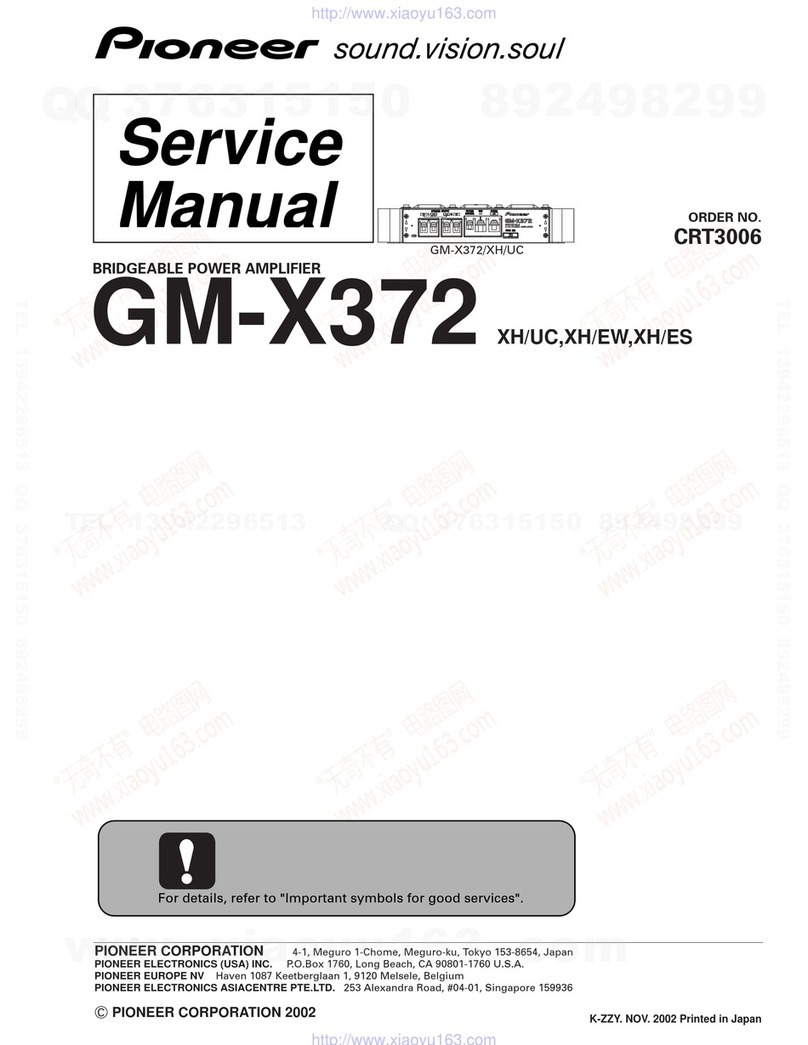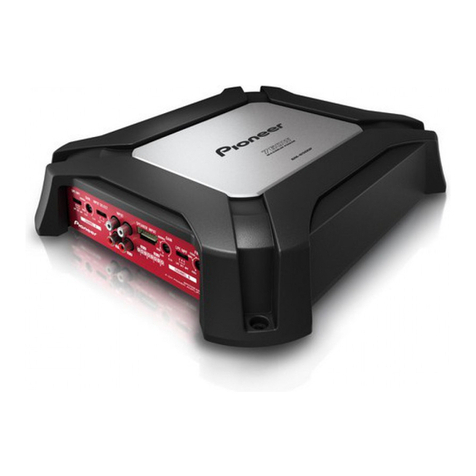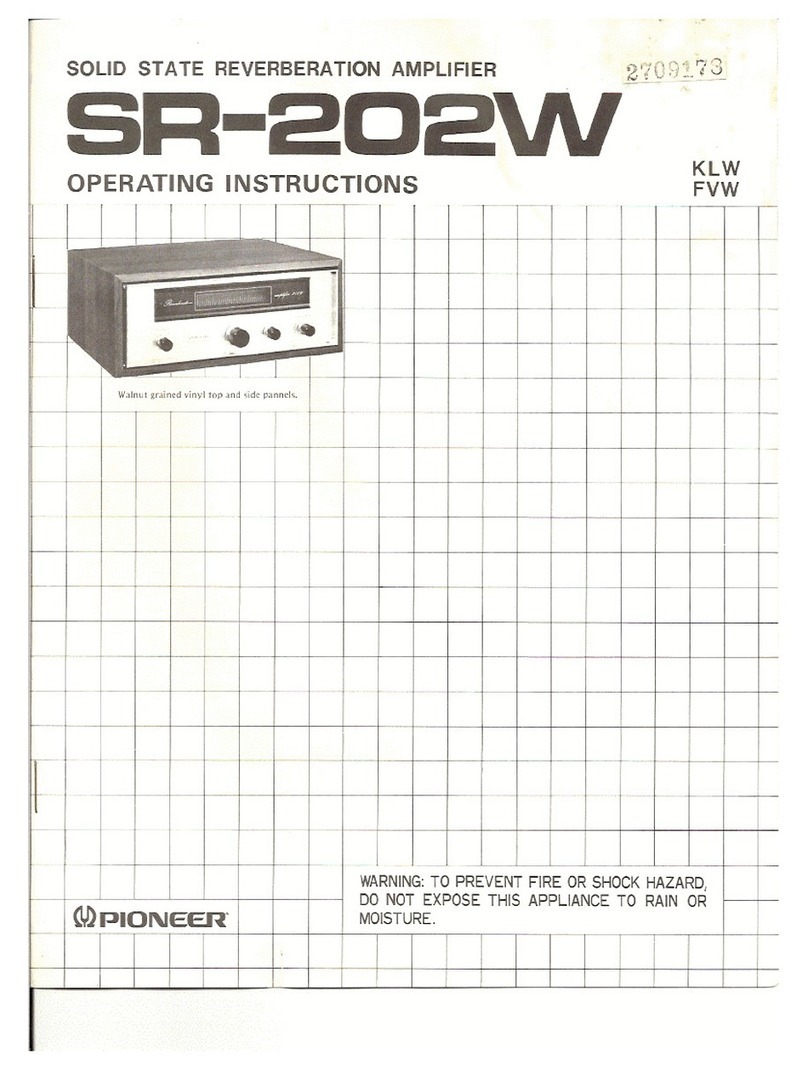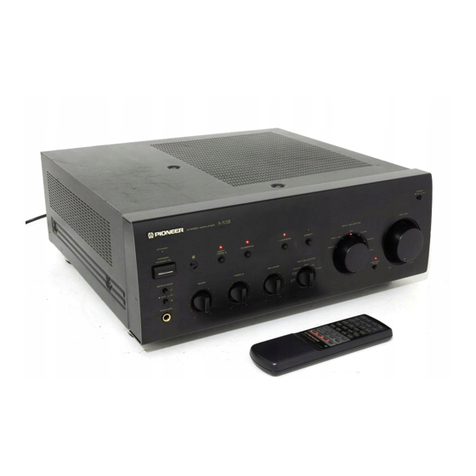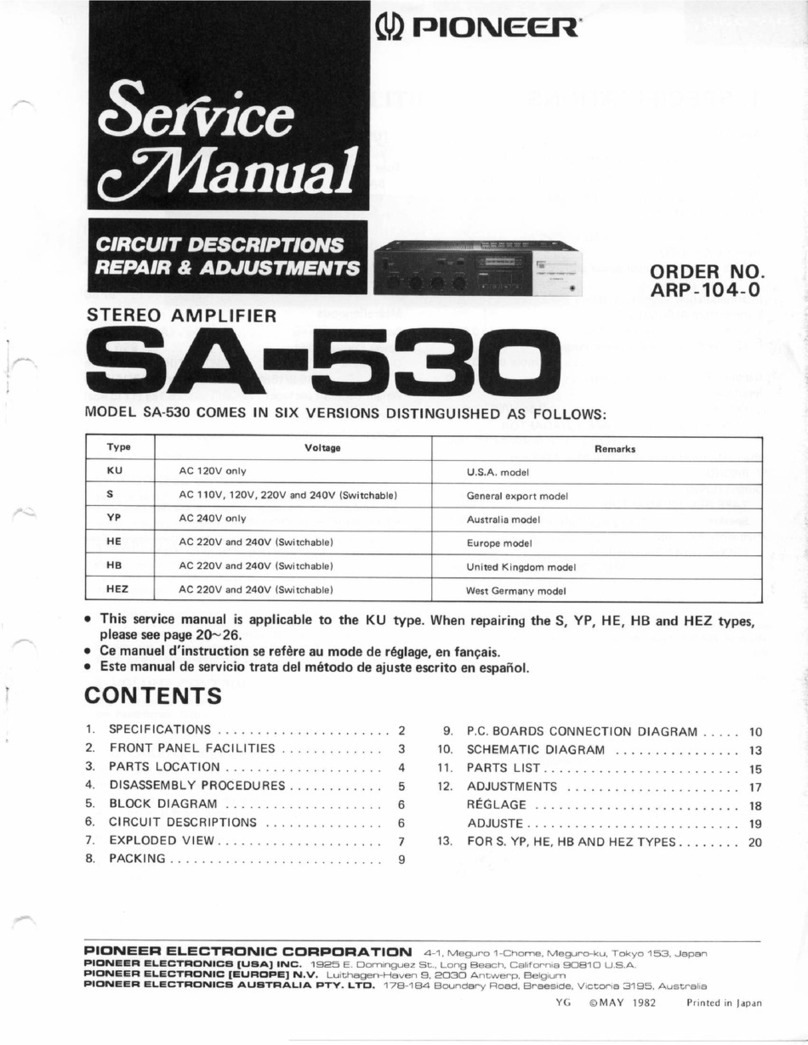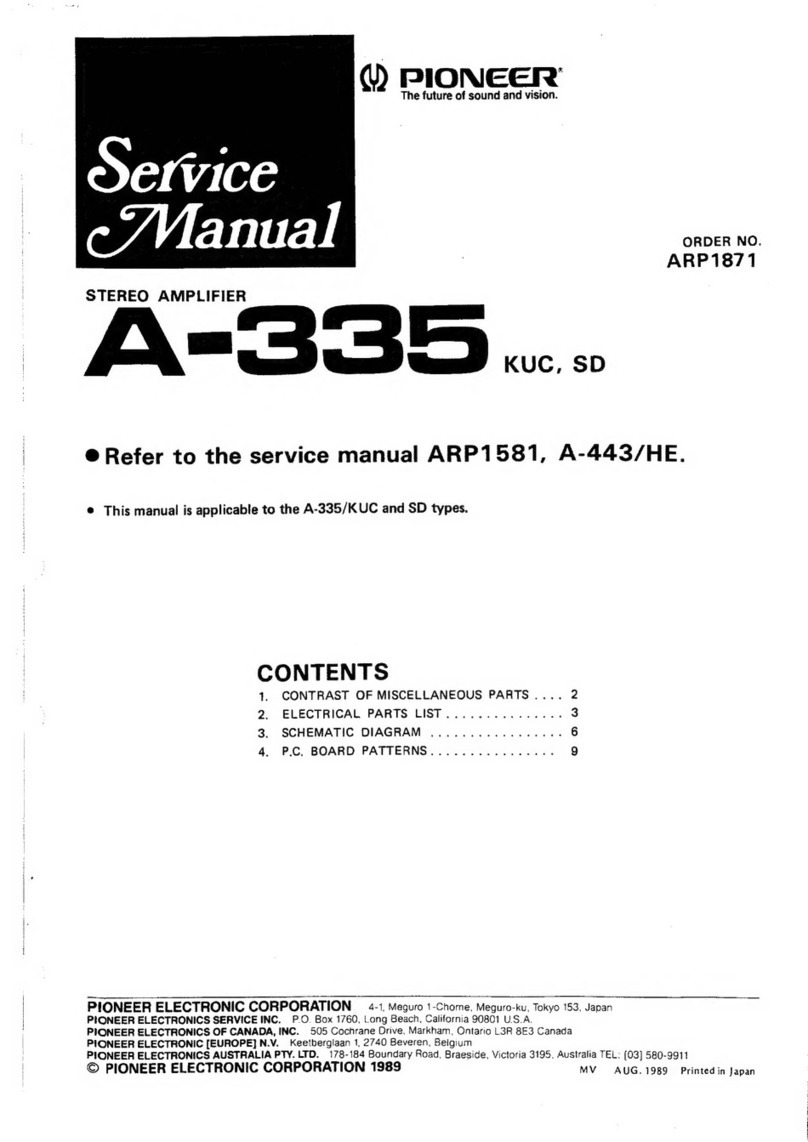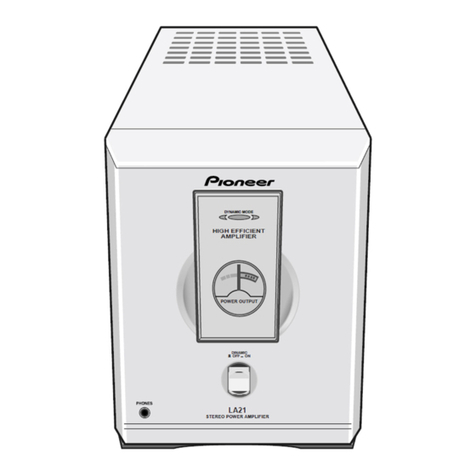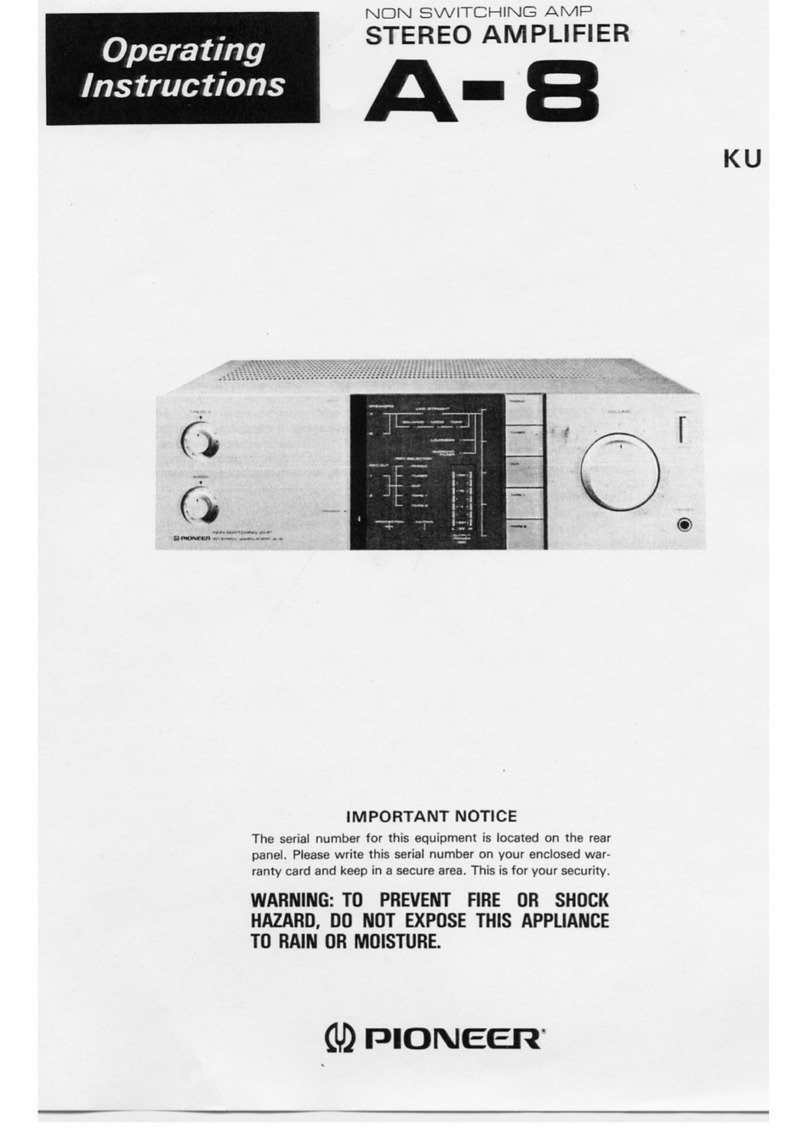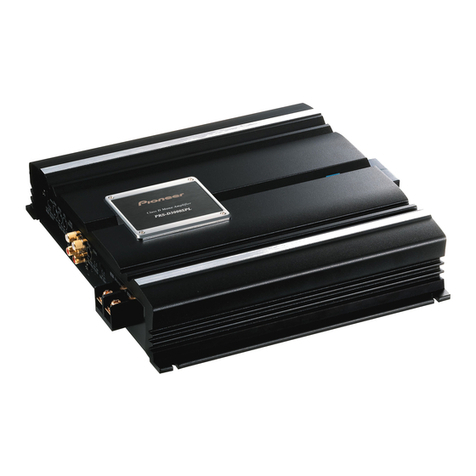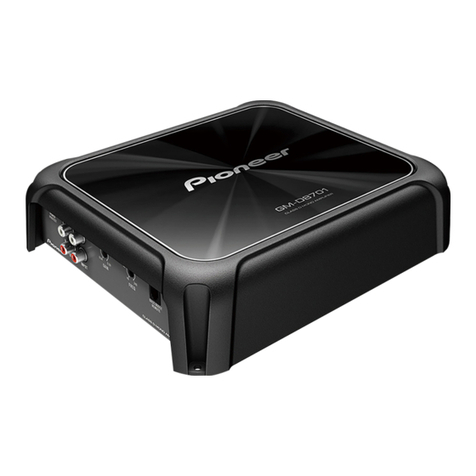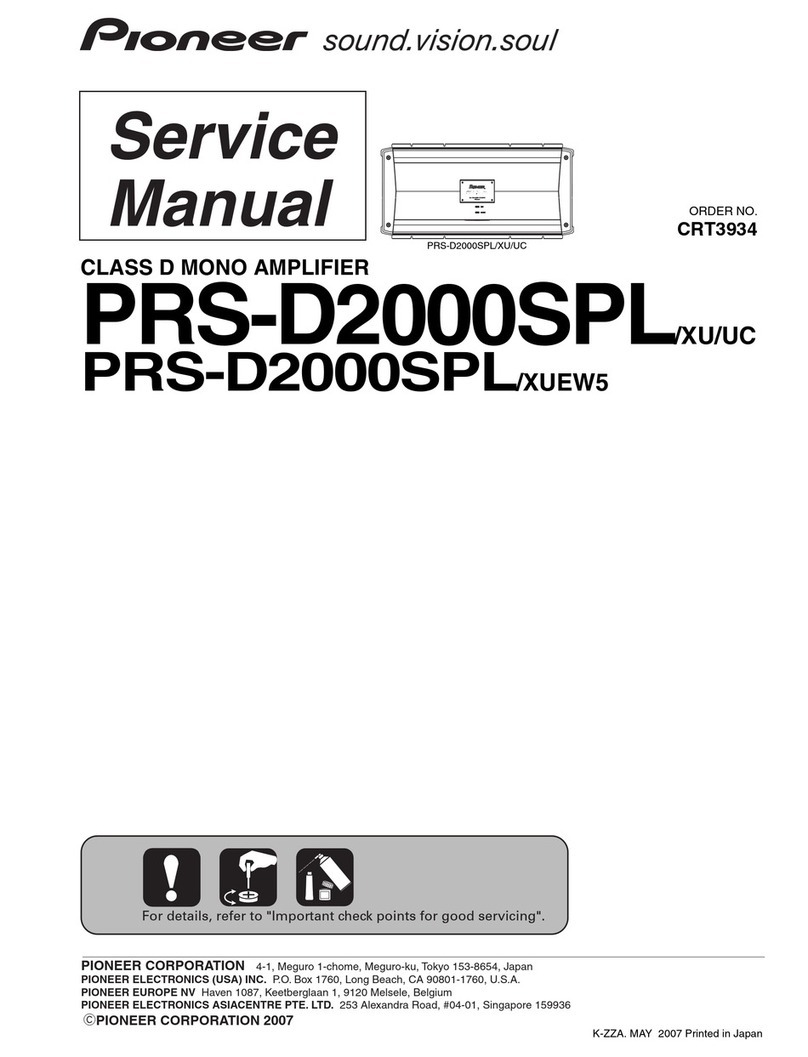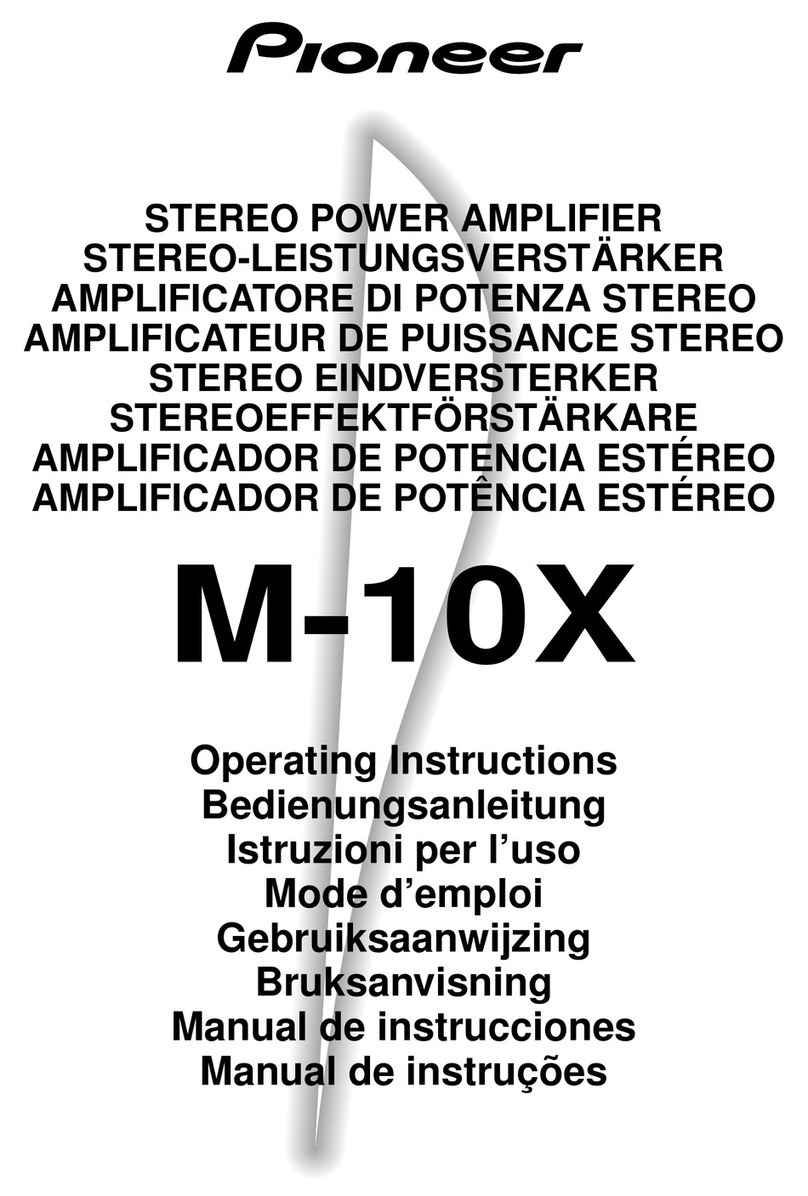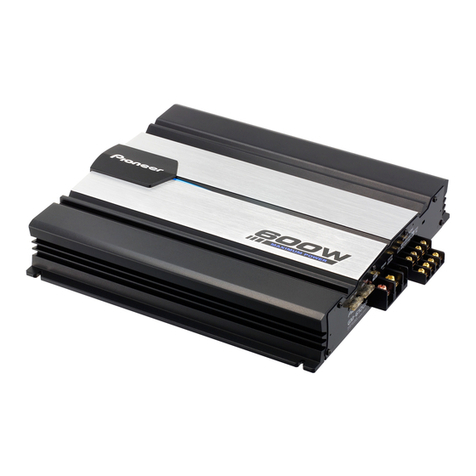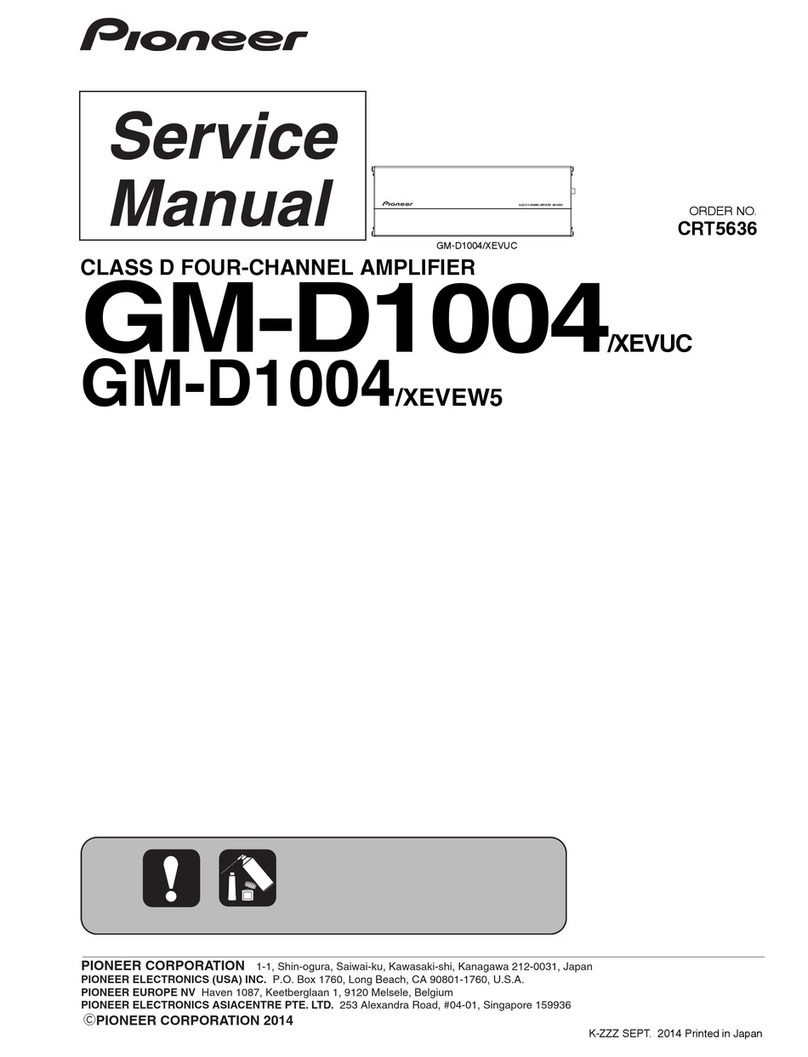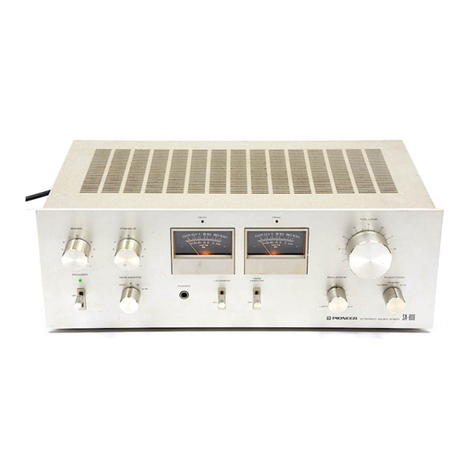A5.CIRCUIT
DESCRIPTIONS
z=50Krt
c) c=roopr
PHONO
2
PHONO
I
CARTRIDGE
LOADSWITCH
sA-El5ClClII
-vcc
+
lr.
rl
Fig.
L Schematicdiagram
of equalizeramplifier
,li 5.1 EOUALIZER
AMPLIFIER
The circuit diagram for the equalizer amplifier is
shown in Fig. 1. The two separatephono inputs
are selected by the FUNCTION selector on the
front panel. The input capacitanceon the PHONO
terminals can be adjusted to 4 different levels
(100pF, 200pF, 300pF, and 400pF) by meansof
the CARTRIDGE LOAD control knob which
switchesin, or out, additional capacitorsin parallel
with the input terminal. Hence, the load capaci-
tance of the phono cartridges can be changed,
greatly effecting the cartridge's frequency response
in the high frequency range, and thus providing
considerablevariation in its characteristics.
The first stage
of the equalizer amplifier (Q' & Qr)
isadifferential amplifier usingPNPtransistors.The
next stage
(Q.) is a bootstrap circuit employing C' ,
R1 to provide high voltage gain. The output stage
(Qo & Qr) is a complementary-symmetrical SEPP
circuit, whose high voltage utility factor results in
a high output voltage. This gives the equalizer
amplifier a very wide dynamic range,and an over-
Ioadinput level
of 250mV (RMSat lkHz) with no
morethan 0.05%distortion.
The equalizerelements
(Cr, C.,,
R, andR.) consist
of polypropylene film capacitors
(tolerance127o),
and metal frlm resistors
(tolerancet1%). Phono
equalizer
RIAA deviationhasbeen
reduced
to less
than10.2dB (2OHz
- 2OkHz\.
5.2 TONE
CONTROLS
Incoming signalsareamplified to the required level
by the 2 stage amplifier which usesa differential
amplifier at first stage.The tone control circuit is a
collector-basenegative feedback circuit (NFB) and
features 3 tumover frequencies for both bass
and
treble.
The basic principles of the NFB type tone control
circuit areoutlined in Fis. 2.
'fl
h
rl
0d0ut
hI|lt n, vn, n,
L.-
,,,
-{P
c.
Rl
,c. d
Fi1.2.
t, vR, R,
Basiccircuitryof NFB
typetonecontrolcircuit
iri
